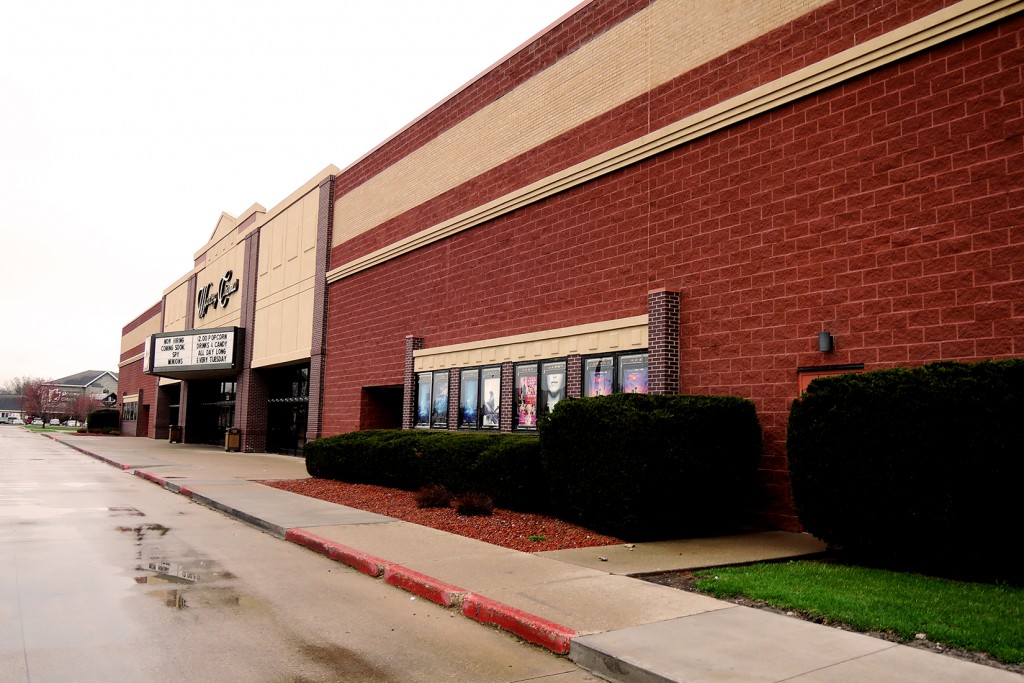I was 16 when I first enjoyed a movie in a theater. It was The Pink Panther 2 at the Carmike Wynnsong 16 in Johnston, Iowa. It was the first movie I could remember that offered closed captioning.

When I was 3, I was diagnosed with profound hearing loss. I was fitted with hearing aids, and, at age 10, I received cochlear implants. These small electronic devices provide deaf people with a sense of sound. They are life changing but imperfect. They allow me to hear movies, but not as well as people who don’t have hearing loss.
Without captioning, I have difficulty following a movie’s storyline. When everyone else bursts into laughter, I have to ask the person next to me what happened. The joke is never as funny the second time around. It doesn’t help that the sound comes through speakers instead of a real person, making it difficult to understand the actors.

That’s where captioning comes in.
The Americans With Disabilities Act requires movie theaters to accommodate hearing-impaired customers, but it doesn’t specify exactly how. Advances in technology have made captioning more accessible and cheaper. Now, the Department of Justice, which oversees implementation of the ADA, is considering a rule that specifically requires theaters to provide closed captioning technology for the hearing-impaired. The proposed rule has the support of numerous advocacy groups for the hearing-impaired and of the National Association of Theatre Owners.
Most movies released by U.S. studios are produced with captioning. (That’s why you can turn on captioning when you watch a movie on Blu-ray or Netflix.) And most American movie theaters have converted to digital cinema systems that can show such movies. But not all theaters provide the necessary equipment to make captioning available to their customers. The proposed rule would change that. If the rule is formally adopted, digital theaters would have six months to comply.
The regulation would be a step forward for 48 million Americans — 20 percent of the population — who have some degree of hearing loss. Right now, a little more than half of the 40,000 theaters in the U.S. provide closed captioning. The proposed regulation would require almost all of them to do so.
Martha Meyer, director of the Iowa chapter of the Hearing Loss Association of America, supports the regulation. “I’m disappointed to not follow the plot or get some of the jokes,” she says of her own movie-going experiences. “And I waste money by going.”
In the Des Moines area, where I live, some big-chain theaters already offer closed captioning: Wynnsong 16 in Johnston, Century 20 at Jordan Creek Mall, and Cinemark Movies 12 in Ames.
But I live in Ankeny, a suburb that is a 20- to 45-minute drive to any of them. My hometown theater, Springwood 9 in Ankeny, is owned by Fridley Theaters, a locally owned chain of 22 theaters in smaller towns in Iowa and Nebraska. Springwood 9 doesn’t provide captioning.
Chris Gowdy, the manager, explains why: “We just don’t have the funding for it since we are not a big theater chain.”
But if the new regulation is approved, Springwood would have to comply.
In already equipped theaters, the captions are delivered on a special device to individual patrons; they aren’t projected on the screen to be visible to all patrons. Several captioning devices are available, but I favor CaptiView, the most user-friendly. A transmitter in the projector sends the captions to the device’s LED screen, which is propped up on a flexible arm that fits in a theater seat’s cup holder. CaptiView costs between $1,700 and $3,000 to install in a single-screen theater. In its proposed rule, the DOJ estimates the average first-year capital cost to equip a digital single-screen theater with captioning at about $3,200.

Carmike Wynnsong 16, the Johnston theater where I saw The Pink Panther 2, has had CaptiView for several years. “We installed the CaptiView device because we knew that there would be a [regulation] coming,” says manager Nathan Pike. “We were already prepared.”
Theaters that have only analog screens would have more time to comply with the new regulation. So would any theater, particularly smaller, family-owned theaters, that would incur an “undue burden.” Smaller theaters might qualify for a federal tax credit to help defray the expense of installing the technology.

The Fridley chain is considering making the change, studying several options. It’s awaiting the final ruling from the DOJ, which could come sometime this fall.
Meyer lives in Pleasant Hill, Iowa, where Fridley owns a theater, and hopes the small chain will make the conversion. The closest captioned theater is about 20 miles from her house. Plus, she says, “I would like to keep my money in my own town of Pleasant Hill with the Fridley Copper Creek theater. I am willing to pay a little more for my ticket, maybe $1, to get better service. I have skipped quite a few movies that I knew I wouldn’t hear well enough to enjoy.”
In January, I saw Selma at the Wynnsong 16 theater in Johnston. Thanks to the CaptiView captioning, I was fully immersed in the powerful drama about Martin Luther King, Jr., the Selma-to-Montgomery march, and the eventual passage of the Voting Rights Act.
That immersive movie-going experience should be available to everyone — hearing-impaired or not — at every theater. Not only is such access required by the Americans With Disabilities Act, but it’s also the right thing to do, period.

